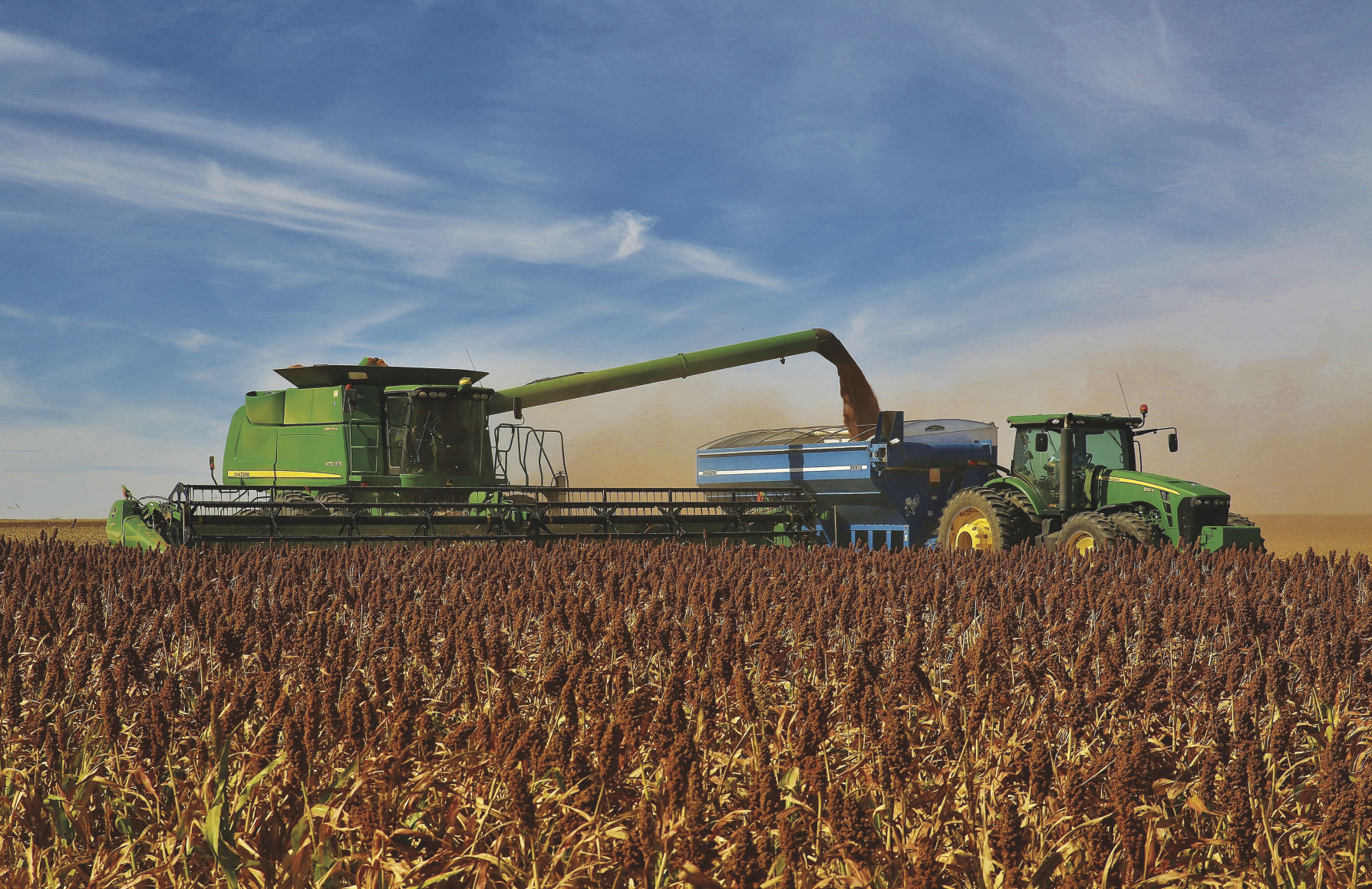The life of the sorghum plant begins when the seed imbibes water. This starts a chain of chemical reactions that drives the growth and development of the plant, culminating in a panicle containing hundreds, if not thousands of seeds (kernels).
How it is treated and what it experiences in its first 30 days will impact its ability to handle what life throws at it over the next 90 days of its expected life.
To establish a solid foundation for high yield, the first objective is to obtain a healthy uniform stand at the correct plant population for a given environment. Good moisture conditions and adequate nutrition close to the germinating seed are critical.
Since roots have not yet expanded, a starter fertilizer will often help in establishment. Restricted early season growth tends to slow the development of the plant, resulting in delayed maturity, which leads to more water use, later harvest and reduced grain quality.
Once the crop is established, it is important to recognize the different vegetative stages and understand how management during each specific stage can impact yield.
Early growth stages are determined by counting fully expanded leaves with the presence of a leaf collar (Figure 1). The leaf collar is where the leaf blade connects to the leaf sheath, forming a distinct angle at the stem. The first leaf is the coleoptile leaf, which is shorter than the later-emerging leaves and has a rounded leaf tip.
Usually within 10 to 14 days after emergence, the sorghum plant has three fully expanded leaves and is only 3 to 4 inches tall. If a preemergence herbicide was not applied prior to or immediately following planting, it should be applied now. Commonly used pre-emergence herbicides that can be applied at this time include atrazine, s-metolachlor, acetochlor and dimethenamid.

Even if these herbicides were applied pre-emergence, growers should assess if these herbicides were fully activated and reapply at this time if necessary. Both drought and too much rainfall can sometimes cause preemergence herbicides to fail, requiring a second application after the sorghum has emerged. Mesotrione and saflufenacil cannot be applied to emerged sorghum.
In the first 20 days any productive tillers will appear at the base of the plant. The number of tillers is determined by hybrid, row spacing and seeding rate, as well as the early environmental conditions. Because the plant is very small, competition from weeds over the first 30 days of the life of the sorghum plant can greatly impact yield.
If weeds have emerged, growers should control them with a postemergence herbicide.
A sorghum plant typically reaches the five-leaf stage 20 to 25 days after emergence, when the plant is approximately 8 inches tall. The roots should be rapidly expanding, and the growing point is still below the ground surface but not for much longer. If a grower plans to apply 2,4-D or dicamba, the best application time is between the third- and fifth-leaf stages.
After the fifth-leaf stage, labels of other herbicides should be carefully examined prior to application to determine if and how the herbicide can be applied safely. A good time to apply nitrogen fertilizer as a side-dress treatment is between 20 and 35 days after emergence.

At 30 to 40 days after emergence, the crop reaches the critical growing point differentiation (GPD) stage, where the plant shifts from producing only leaves to beginning the formation of the grain sorghum head. The GDP stage occurs at the seven- or eight-leaf stage, when the plant is 12 to 15 inches tall. If one or two of the lowest leaves fall off of the plant, it can be difficult to determine the actual leaf stage. To determine if the plant has reached the GDP stage, slice the stalk open and look for the growing point, as shown in Figure 2. If the growing point is visible above the ground, the plant is in the GPD stage.
Prior to the GPD stage, the plant can withstand considerable stress, including hail damage, with minimal effect on yield. Herbicide application becomes much more risky at the GDP stage, and any stress on the plant can reduce head size and potential seed number per head. The GDP stage means the crop is entering into a phase of rapid growth with accelerating uptake of water and nutrients.
This rapid growth phase culminates in the boot stage, which occurs just before head emergence and flowering. In the boot stage, all leaves are fully expanded, and the sorghum head or panicle is located just below the last leaf, where the stalk appears swollen.
The sorghum head will emerge within as few as three days. Moisture and heat stress over the next 20 days can greatly influence final yield. Water and nutrient use are at their peak.
Growers should closely monitor for sugarcane aphid infestation prior to and throughout the boot stage. If sugarcane aphid populations increase above the established regional threshold, an insecticide should be applied immediately.
A more complete discussion of sorghum growth stages and photos can be found at sorghumcheckoff.com and by searching for ‘growth and Development’.
Editor’s note: Brent Bean, Ph.D., is the Sorghum Checkoff director of agronomy, Lubbock, Texas. For more information visit www.sorghumcheckoff.com.




